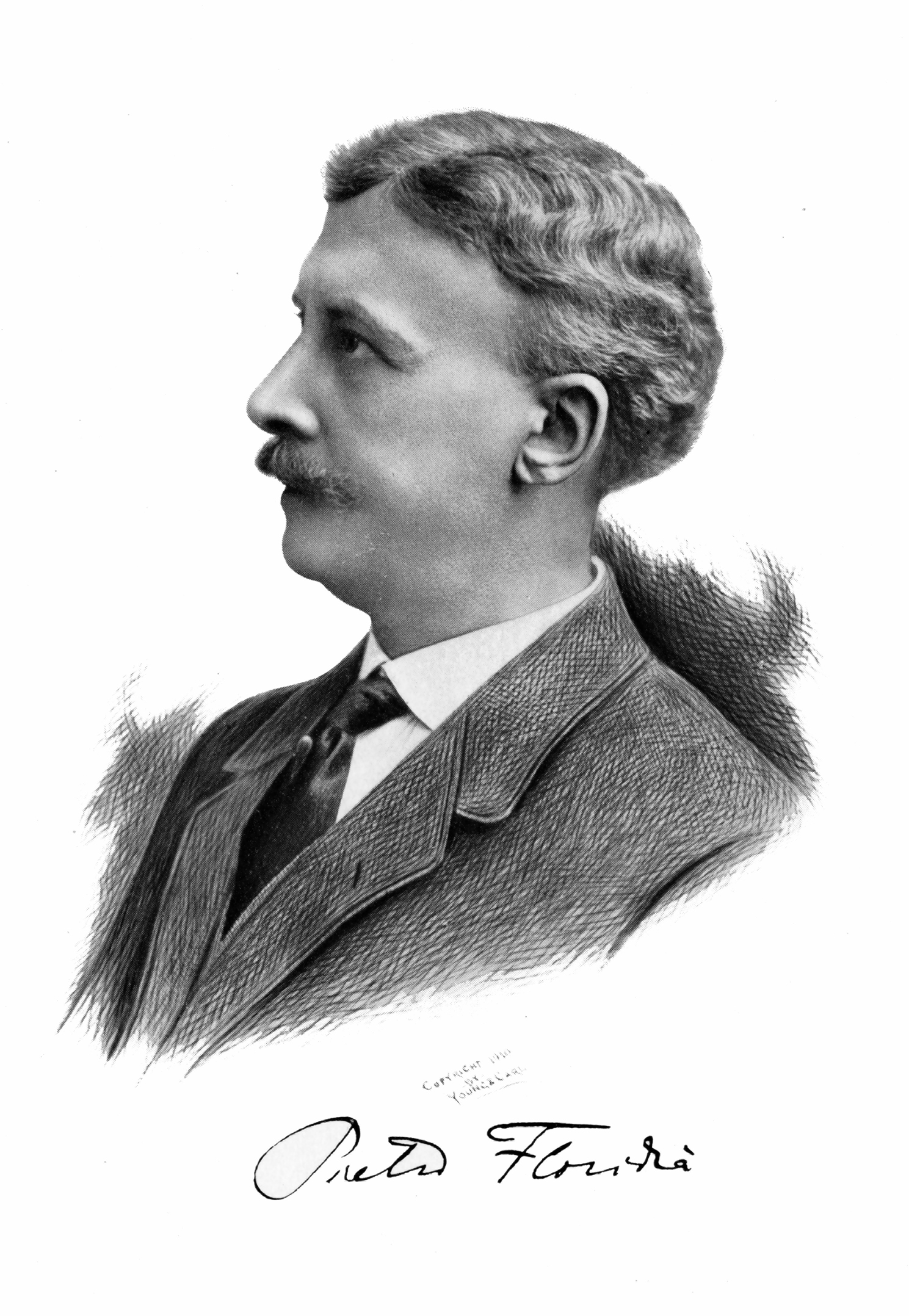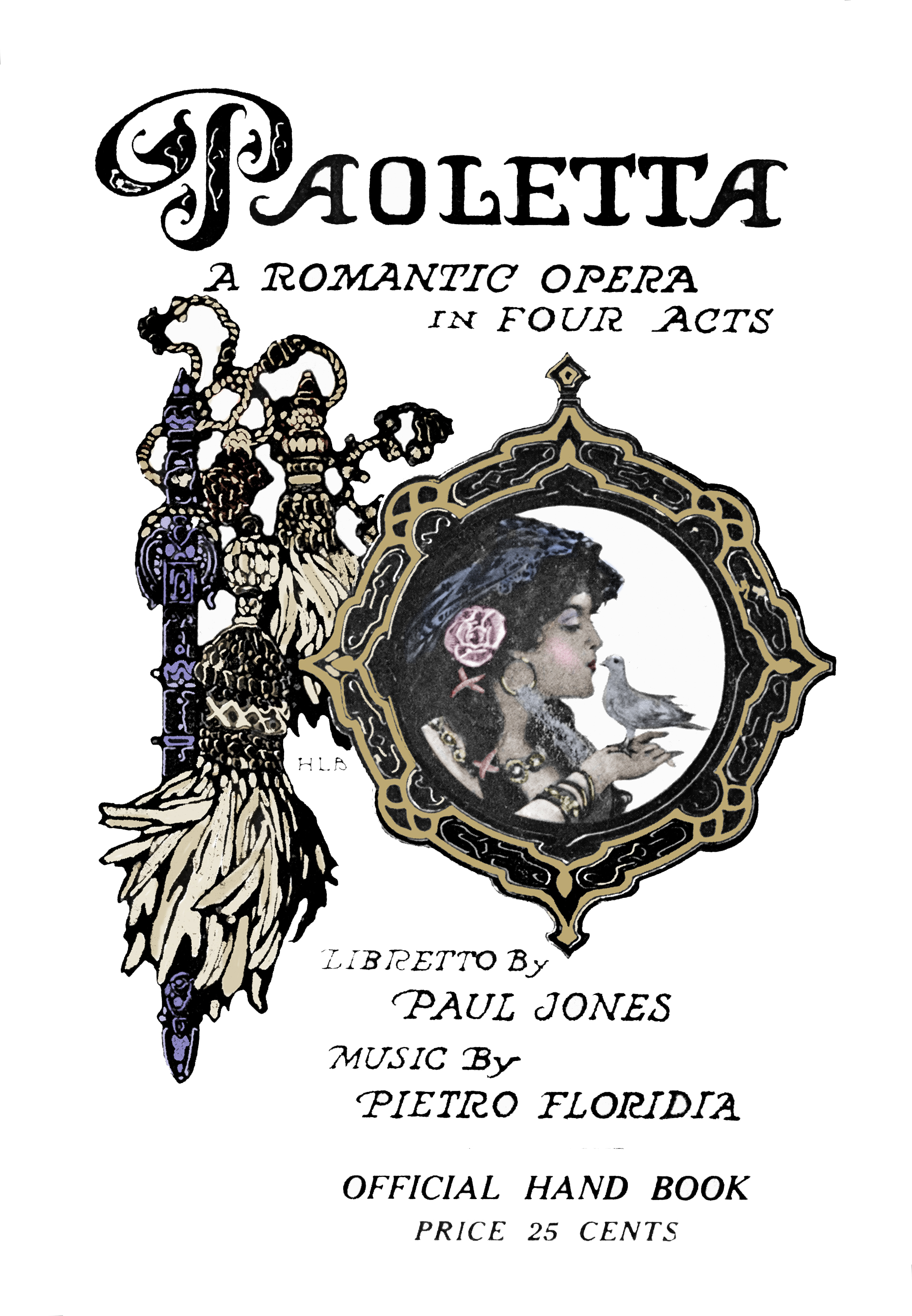On the evening of August 29, 1910, Music Hall resounded to the enthusiastic applause of forty-eight curtain calls at the première performance of the opera Paoletta, acknowledging the members of the cast and the composer-conductor, Pietro Floridia. While the performance was good, the extraordinary number of curtain calls was also an indication of the pride of the local citizenry in the musical grounding of their city.
Paoletta was commissioned by the trustees of the 1910 Cincinnati Industrial Exposition. Cincinnati had a long tradition of excellent industrial expositions. In 1910 the Fall Exposition was to commemorate the settlement of the Ohio Valley. The Board of Trustees wished to call attention not only to the industrial and commercial products of Cincinnati but to its musical heritage as well. The Board’s membership included Robert R. Reynolds, James P. Orr of the Potter Shoe Company, P. Lincoln Mitchell, attorney, Frank Herschede, jeweler, Julius Fleischmann, and Aaron L. Stix, all of whom were prominent business leaders. It commissioned a grand opera for presentation during the exposition. Historians of opera claimed that this was the first instance in the United States that a municipality commissioned an operatic work for the celebration of an historical event.
The composer chosen to write this opera was an Italian-American musician, pianist, and teacher, Pietro Floridia, who had served on the faculty of the College of Music of Cincinnati shortly after immigrating to the United States. He had been successful as a composer of opera and symphonic works in Italy. For his librettist Floridia chose Paul Jones, a Cincinnati artist and pageant director. Jones had sketched out a novel, The Sacred Mirror, and he used a sequence of episodes from this unpublished manuscript for the libretto. For the male lead, they secured David Bispham, the foremost American-born vocalist of his time; Bernice de Pasquali, also American-born, sang the part of the heroine, Paoletta. Both were members of the Metropolitan Opera Company. After creating their roles they were relieved from time to time by Carl Gantvoort and Edna Showalter, two well-known local singers. There was a chorus of 140 persons, all of them drawn from the May Festival Chorus, a corps de ballet of fifteen imported from New York, and an orchestra of fifty-three members of the Cincinnati Symphony Orchestra. Expenses were not pinched; the project reflected favorably on the musical attainments of the community.
Twenty-nine performances of the opera were given. The Exposition itself received national attention since President William Howard Taft opened the spectacle and ex-President Theodore Roosevelt with his daughter, Alice, and son-in-law, Nicholas Longworth, stopped in the city to visit it and attend a performance of the opera. Although one of the acts had a single performance a few years later in New York, the final full performance of Paoletta took place in Cincinnati at the close of the Exposition on September 24, 1910.
Paoletta composer Pietro Floridia was born in Sicily in 1860. He studied in Naples with Cesi (piano) and Lauro Rossi (composition), and while at the Naples Conservatory published several piano pieces which became quite popular. In 1882, Floridia’s comic opera Carlotta Clepier was produced in Naples, but he later burned the score. In 1892 Cosima Wagner offered him a position at her Bayreuth school to teach piano and composition, but he declined. In 1904 he emigrated to the United States. From 1904 to 1906 he taught piano and composition in New York. In 1906 he accepted a position as a voice teacher at the College of Music of Cincinnati, leaving in 1908 to settle in New York City, where he organized and conducted an Italian Symphony Orchestra. Most of his music, written in the Italian verismo style, is for the stage. His other operas included Maruzza (produced in Venice, 1894), La colonia libera (Rome, 1899), The Scarlet Letter (1902, not produced) and Malia (1932, not produced). He died in New York City August 16, 1932.
Librettist Paul Jones was born in Harrodsburg, Kentucky. The plot of Paoletta was based on Jones’ unpublished story The Sacred Mirror. An artist by profession, Jones designed the official poster of the 1910 Ohio Valley Exposition as well as most of the sets used in the production of the opera. His overall color scheme for the sets was adapted for use by costume designer Will R. Barnes.
